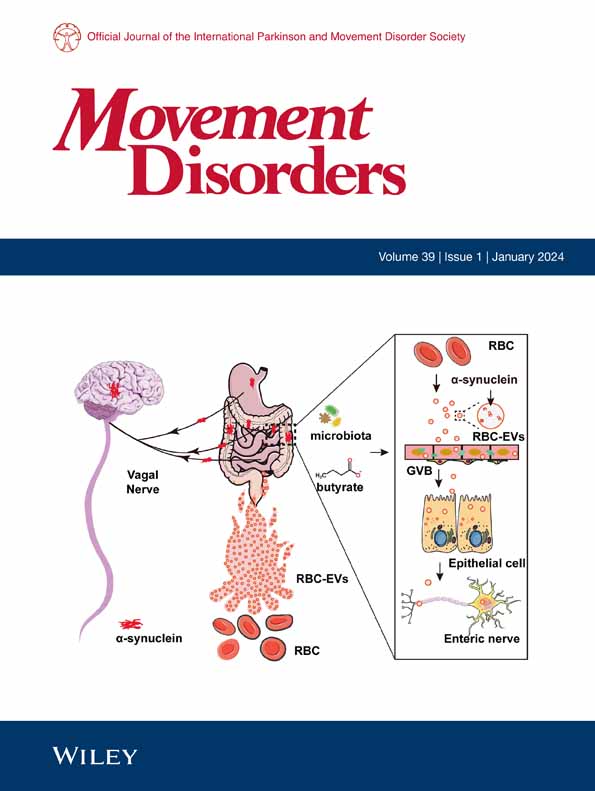Maria C. Rodriguez-Oroz MD, PhD, Raúl Martínez-Fernández MD, PhD, Nir Lipsman MD, PhD, Shiro Horisawa MD, PhD, Elena Moro MD, PhD
下载PDF
{"title":"Bilateral Lesions in Parkinson's Disease: Gaps and Controversies","authors":"Maria C. Rodriguez-Oroz MD, PhD, Raúl Martínez-Fernández MD, PhD, Nir Lipsman MD, PhD, Shiro Horisawa MD, PhD, Elena Moro MD, PhD","doi":"10.1002/mds.30090","DOIUrl":null,"url":null,"abstract":"<p>Bilateral lesions of the basal ganglia using termocoagulation or radiation for improving tremor, bradykinesia, and rigidity in people with Parkinson's disease (PD) have been performed starting several decades ago, especially when levodopa and deep brain stimulation (DBS) surgery were not available. However, because of unclear additional benefit compared to unilateral lesion, and particularly to the evidence of increased adverse events occurrence, bilateral lesions were basically abandoned at the end of the 20th century. Therefore, bilateral DBS has become the standard procedure to treat PD. Magnetic resonance imaging-guided focused ultrasound (MRgFUS) is an emerging incisionless technique used to produce therapeutic brain ablation. The positive experiences of unilateral MRgFUS ablation for PD, along with the preliminary favorable outcomes of bilateral thalamic MRgFUS for essential tremor, raise the possibility to eventually reintroduce bilateral lesioning in the management of PD motor features. This possibility has so far only been tested in a few small studies. This article reviews the evidence of bilateral lesioning of the basal ganglia to treat PD, and elaborates on current gaps, controversies, and perspectives of the different available neurosurgical procedures and specifically of MRgFUS ablation. © 2024 The Author(s). <i>Movement Disorders</i> published by Wiley Periodicals LLC on behalf of International Parkinson and Movement Disorder Society.</p>","PeriodicalId":213,"journal":{"name":"Movement Disorders","volume":"40 2","pages":"231-240"},"PeriodicalIF":7.4000,"publicationDate":"2024-12-27","publicationTypes":"Journal Article","fieldsOfStudy":null,"isOpenAccess":false,"openAccessPdf":"https://onlinelibrary.wiley.com/doi/epdf/10.1002/mds.30090","citationCount":"0","resultStr":null,"platform":"Semanticscholar","paperid":null,"PeriodicalName":"Movement Disorders","FirstCategoryId":"3","ListUrlMain":"https://onlinelibrary.wiley.com/doi/10.1002/mds.30090","RegionNum":1,"RegionCategory":"医学","ArticlePicture":[],"TitleCN":null,"AbstractTextCN":null,"PMCID":null,"EPubDate":"","PubModel":"","JCR":"Q1","JCRName":"CLINICAL NEUROLOGY","Score":null,"Total":0}
引用次数: 0
引用
批量引用
Abstract
Bilateral lesions of the basal ganglia using termocoagulation or radiation for improving tremor, bradykinesia, and rigidity in people with Parkinson's disease (PD) have been performed starting several decades ago, especially when levodopa and deep brain stimulation (DBS) surgery were not available. However, because of unclear additional benefit compared to unilateral lesion, and particularly to the evidence of increased adverse events occurrence, bilateral lesions were basically abandoned at the end of the 20th century. Therefore, bilateral DBS has become the standard procedure to treat PD. Magnetic resonance imaging-guided focused ultrasound (MRgFUS) is an emerging incisionless technique used to produce therapeutic brain ablation. The positive experiences of unilateral MRgFUS ablation for PD, along with the preliminary favorable outcomes of bilateral thalamic MRgFUS for essential tremor, raise the possibility to eventually reintroduce bilateral lesioning in the management of PD motor features. This possibility has so far only been tested in a few small studies. This article reviews the evidence of bilateral lesioning of the basal ganglia to treat PD, and elaborates on current gaps, controversies, and perspectives of the different available neurosurgical procedures and specifically of MRgFUS ablation. © 2024 The Author(s). Movement Disorders published by Wiley Periodicals LLC on behalf of International Parkinson and Movement Disorder Society.


 求助内容:
求助内容: 应助结果提醒方式:
应助结果提醒方式:


